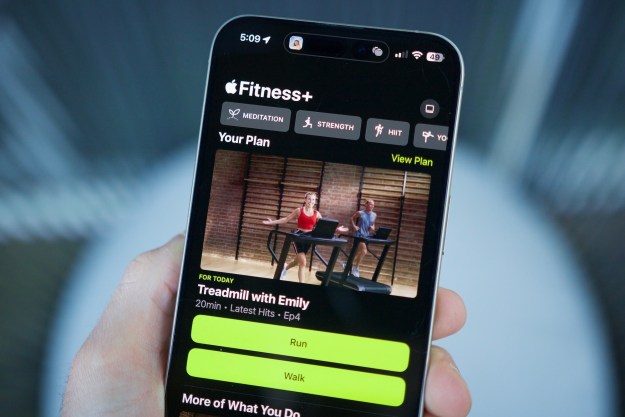Canonical’s Ubuntu announced Convergence, a Microsoft Continuum-like feature, a while ago, but we have now had a chance to take a look at its booth at Mobile World Congress in Barcelona, along with the world’s first Ubuntu-powered tablet.
Convergence
Convergence is a feature that enables people using an Ubuntu smartphone to simply plug their device into a monitor via an HDMI cable. It only works with devices that support the right cable that can connect to a monitor, and Ubuntu’s Desktop Engineering Manager at Canonical, Will Cooke, used a Nexus 4 running Ubuntu to demo Convergence.
The Nexus 4 was running the smartphone version of Ubuntu, but once he plugged it into the monitor, after a few seconds the desktop version of Ubuntu appeared on the larger screen. Cooke said you can’t use your
In desktop mode, you don’t have to worry about your apps closing when you switch to a monitor. All of the apps he was using on the Nexus 4 appeared on the desktop in windowed programs. If you were playing music or a video, it would continue playing after you plugged your device into a monitor. And the same would apply in reverse — if you have to quickly head out, unplugging your smartphone won’t close any apps or lose any data.
All in all, the switch to a desktop mode was amazingly quick and seamless, which is how it should be.
Meizu Pro 5
The Meizu Pro 5 isn’t exactly a new device — the Chinese company launched the Android device last year. This one, however, was the Ubuntu edition.
The 5.7-inch device itself is quite sleek and thin, with rounded corners and a high-end feel when it’s in your hand. It also has quite the spec sheet, featuring an octa-core Exynos 7420 chip, and options of 3GB or 4GB of RAM, and 32GB and 64GB of internal storage, respectively. While it’s quite big, it only has a 1080p AMOLED display, but it packs a big 3,050mAh battery to keep it juiced up. The Meizu Pro 5 also has a fingerprint reader, a 21-megapixel rear camera, and a 5-megapixel front-facing one.
While it boasts impressive specs, I didn’t find the Meizu Pro 5 to perform that well — there was noticeable lag and stutter when moving through screens and apps. It was also slow to load several apps. Ubuntu did say the software was unfinished, but it really shouldn’t be this slow at this stage in the device’s unveiling. What’s also disappointing is that this device doesn’t support Convergence, as it doesn’t have the proper display support.
Cooke did say Canonical is working on a wireless version of Convergence. So you’ll eventually be able to connect to a monitor wirelessly with the Meizu Pro 5, but it doesn’t really seem worth the wait when you can simply find an alternative device that already supports it.
One interesting feature in the new Ubuntu OS is Scopes — it sort of acts like a home screen with widgets, offering information on nearby locations, the weather, and a search bar where you can choose “I’m stressed,” or “I’m hungry,” to have the page refresh and display nearby spa locations or restaurants. It may have been the Internet service at the convention center, but when I tapped on “I’m hungry,” the information took quite a long time to update. Scopes in general also didn’t seem to be particularly helpful at a quick first glance, although it presents a lot of information, it doesn’t always do so in the most pleasing way.
Perhaps when the device is available for purchase, Canonical will have worked out the kinks in its software, but my initial impression of the device was disappointing.
BQ M10
There are a lot of 2-in-1 tablet and laptop devices on the show floor at Mobile World Congress, like Huawei’s Matebook or Alcatel’s Plus 10. With BQ’s M10, you can get a similar mobile productive experience on Ubuntu.
The tablet itself has a desktop mode, that acts similarly to how Windows 10 tablets switch. But if you want more screen real estate, the BQ M10 is compatible with Convergence as it has a Micro HDMI port you can use to plug into a monitor. Turning on a paired Bluetooth mouse and keyboard will activate desktop mode automatically. You’ll see the same Scopes interface from Ubuntu’s mobile devices, albeit slightly tweaked to suit a tablet’s standards.
The BQ M10 has a solid build quality. and was a pleasure to hold. It had a nice weight, but the display didn’t seem all that bright, even after sliding it up to the highest setting. It also has sizable bezels, but that doesn’t stop the thin 10.1-inch device from looking like a high-end tablet.
At 10.1 inches, the device still only maintains a 1080p resolution, and it has a MediaTek quad-core processor that provides the power. It has a very large 7,280mAh battery that takes care of the energy, and the M10 also has 2GB of RAM, with only 16GB of internal storage space. Not to worry though, as it also has a MicroSD card slot, and an 8-megapixel rear camera to boot.
The M10 was a pleasure to use and play around with, and it was easy to switch to and use desktop mode. The only problem is you’ll have to get your own stand, mouse, and keyboard to truly turn it into a productivity workhorse.


